How to Use AI for Internal Communication (Use Cases & Tools)

Sorry, there were no results found for “”
Sorry, there were no results found for “”
Sorry, there were no results found for “”

Employee engagement is often easier said than done.
In fact, Gartner HR’s research also shows that 70% of employees feel disengaged because their feedback is overlooked. This lack of connection can directly impact productivity, retention, and overall business success.
Internal comms, aka internal communications, can make a significant difference here, but not without the right insights, data, and support.
This is where AI in internal communications comes in. From analyzing employee feedback to delivering valuable data-driven insights, AI communication tools are helping internal communicators create more engaging, responsive communication strategies.
In this blog, we’ll explore AI use cases and how it’s transforming internal communications, practical use cases to solve communication gaps, and key challenges to be aware of.
Effective internal communication is all about keeping your workforce connected, informed, and engaged. But to really nail it, you need to look beyond day-to-day updates—you must keep an eye on your organization’s internal dynamics and broader communication trends.
This means understanding employee sentiment, tracking engagement metrics, and staying ahead of communication needs. It impacts everything, from leadership alignment to team collaboration.
The key here is to gather data, identify patterns, and act on those insights to build smarter, more effective communication strategies. When you do that, you communicate, boost engagement, and drive business success.
But what if businesses could turn feedback into action and do it faster?
Artificial intelligence can step in as the perfect assistant here to execute tasks smarter and faster, ensuring clear and impactful communication. Here’s how a human-centric AI can support you:
👀 Did You Know? Millennials, particularly those aged 35 to 44, lead the way in AI adoption within the workforce. A significant 62% of this demographic report advanced AI skills. In contrast, while Gen Z (18-24 years old) demonstrates a growing familiarity, only 50% claim high AI expertise. Baby boomers over 65 show the lowest adoption rate, with just 22% reporting significant AI proficiency.
When asked why they felt disengaged, one employee admitted, “In general, I lack accurate and complete information, and it makes me uncomfortable when I have to search for it, especially when I’m unsure whom to ask.”
To tackle this internal communication challenge and enhance employee experience, here are some practical AI use cases you can implement:
Beyond simply compiling resources, your team can leverage AI to deliver a more personalized learning experience. AI can tailor onboarding materials and training modules by analyzing new hire profiles to match their roles and departments.
This means new employees get the right information faster, helping them settle in quickly, reduce ramp-up time, and feel engaged from day one.
📌 Example: An employee can ask a chatbot, ‘How do I request time off?’ and receive instant instructions and links to the relevant forms without contacting HR.
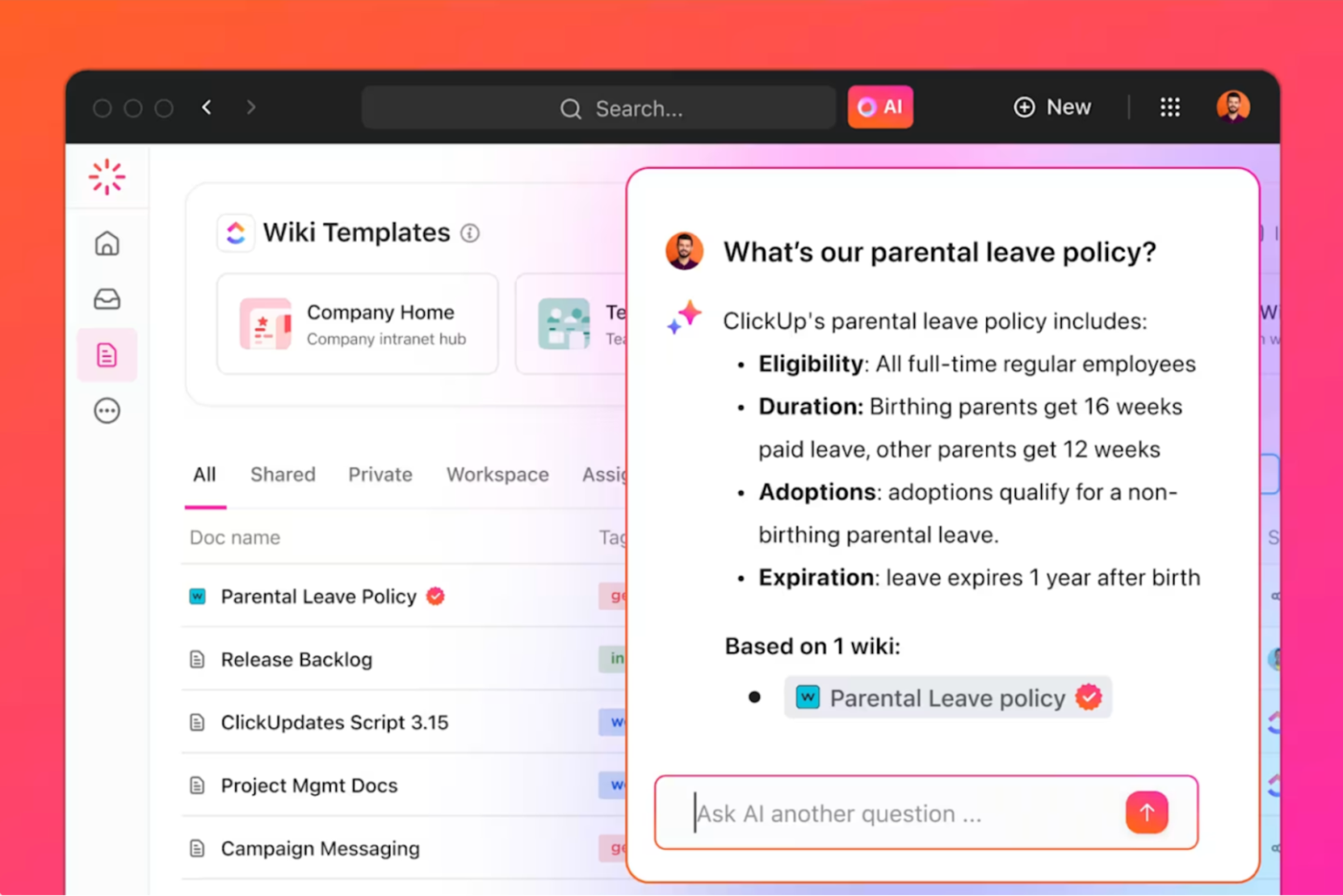
Company announcements, project updates, and industry news can seem mundane. However, a personalized employee feed helps keep everyone informed without overwhelming them, ensuring employees stay connected and engaged.
📌 Example: The sales team can use AI as a personal assistant and have it deliver updates on a new product launch within an automated daily digest.

Use AI tools to analyze employee surveys, feedback forms, and even internal social media platform posts to gauge their sentiment. AI can spot recurring themes, potential issues, and even the tone of feedback, helping you understand what’s really on employees’ minds.
It becomes a perfect AI tool for HR. It allows for proactive interventions and clarifies employee morale before minor issues become bigger problems.
📌 Example: If AI detects a spike in negative sentiment related to a new company policy, HR can quickly address concerns through personalized messages and policy adjustments.
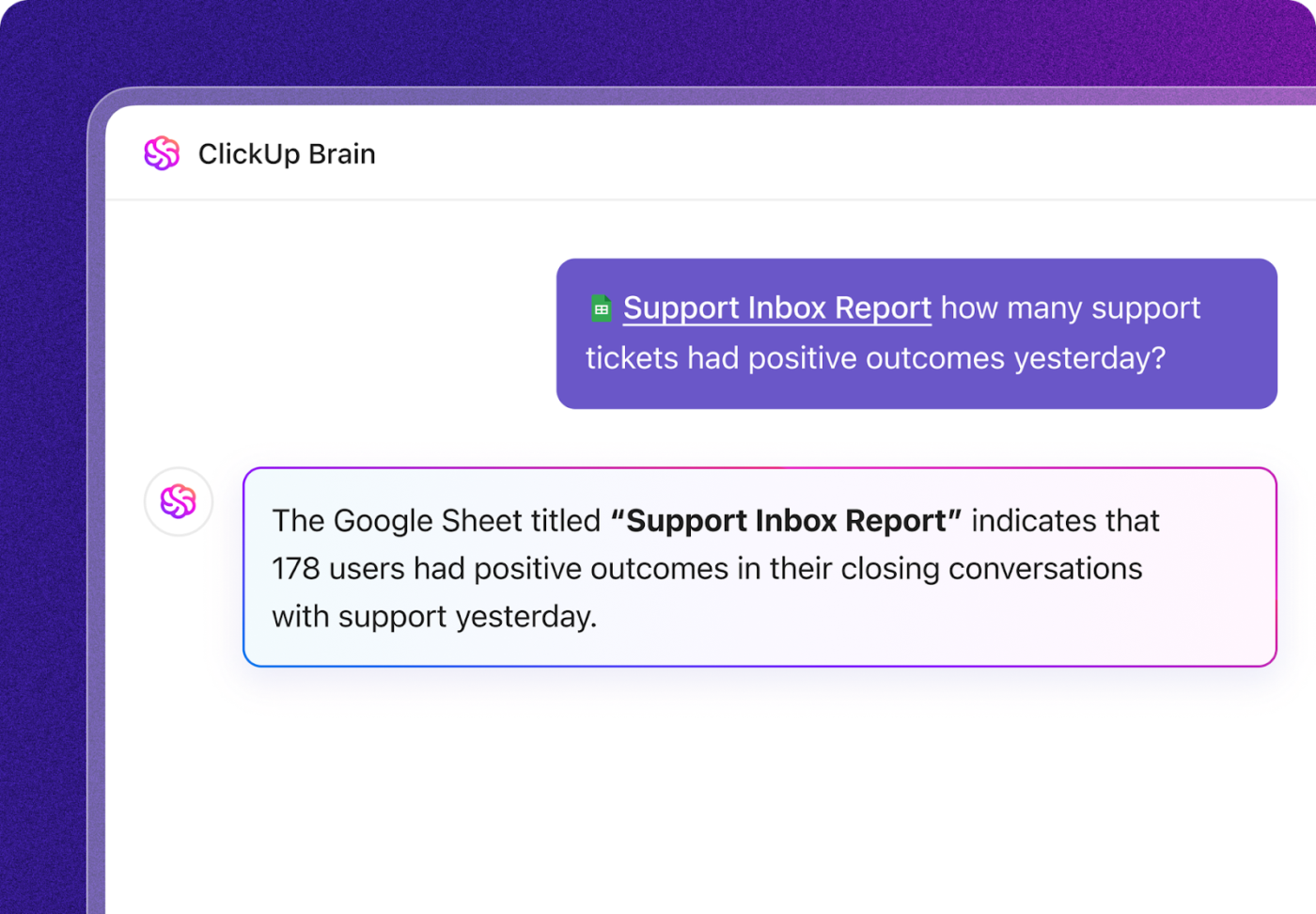
Internal communicators can use AI chatbots to answer common employee questions. These bots provide instant, 24/7 support, reducing the burden on support teams and compiling all communication materials in one place.
Figuring out how to actually impact employee engagement is a huge priority because it has a significant impact on several key business outcomes.

An AI assistant can segment employees by role, department, and communication preferences, ensuring they receive targeted messages during organizational changes. It can also track engagement metrics to refine messaging and boost campaign effectiveness.
📌 Example: If you’re implementing a new performance management system, AI can perform data analysis to understand the past feedback of employees and identify who’s resistant to change. Then, it can deliver personal messages to address their concerns and highlight the new system’s benefits.
Companies with an inclusive culture see 83% higher employee engagement. To achieve this, use AI-powered translation tools to translate messages and auto-generate video captions. This ensures everyone stays informed, regardless of language or accessibility barriers.
📌 Example: A global company can use AI to automatically translate messages in its employee handbook into multiple languages, ensuring that all employees have access to the same information. AI-generated video captions for training videos will make them accessible to employees with hearing impairments.

Machine learning AI algorithms can optimize the company’s knowledge base, making it easier for employees to find information. Based on employee searches, these can also suggest relevant content and further reading material.
This process will improve knowledge sharing and reduce the time spent searching for information.
📌 Example: If multiple employees search for ‘remote work policy,’ AI can highlight that document and recommend related articles on work-life balance and remote collaboration tools.
AI systems can analyze large volumes of performance reviews. They allow them to provide 360-degree feedback and project contributions to identify patterns and provide personalized feedback to employees. This system can also suggest development opportunities based on individual strengths and weaknesses.
Put these together, and you will get more data-driven performance management and employee development.
📌 Example: AI can compile feedback from multiple sources and generate a summary report highlighting an employee’s strengths in project management and areas for improvement in communication.

➡️ Also Read: How to Use AI in Email (Use Cases & Tools)
Nearly 60% of C-level leaders find adapting their corporate communication strategies challenging, while almost half of business leaders admit they’re out of touch with what employees care about.
This disconnect can be costly, but AI-powered data analytics and sentiment analysis can turn things around by tracking employee feedback and engagement trends. With the right internal communication software, companies can stay ahead of concerns, refine communication strategies, and boost overall connection.

For internal communication professionals, intelligent assistants like ClickUp Brain can be a game changer in repetitive tasks, improving knowledge accessibility, and enhancing engagement.
It’s the secret sauce for a more efficient and effective workplace communication strategy.
This connected AI system is a central hub, seamlessly integrating with workplace tools and knowledge bases. It offers features like:
Instead of waiting for responses from HR or IT, employees can use ClickUp Brain to get quick answers on company policies, PTO balances, project statuses, and more. Brain dives into your workspace and company wikis stored inside the platform to pick out relevant answers, disclaimers, and even files for your questions.
Bottom line: You ask questions using the Ask AI feature anywhere in your workspace. No more wondering what to do!
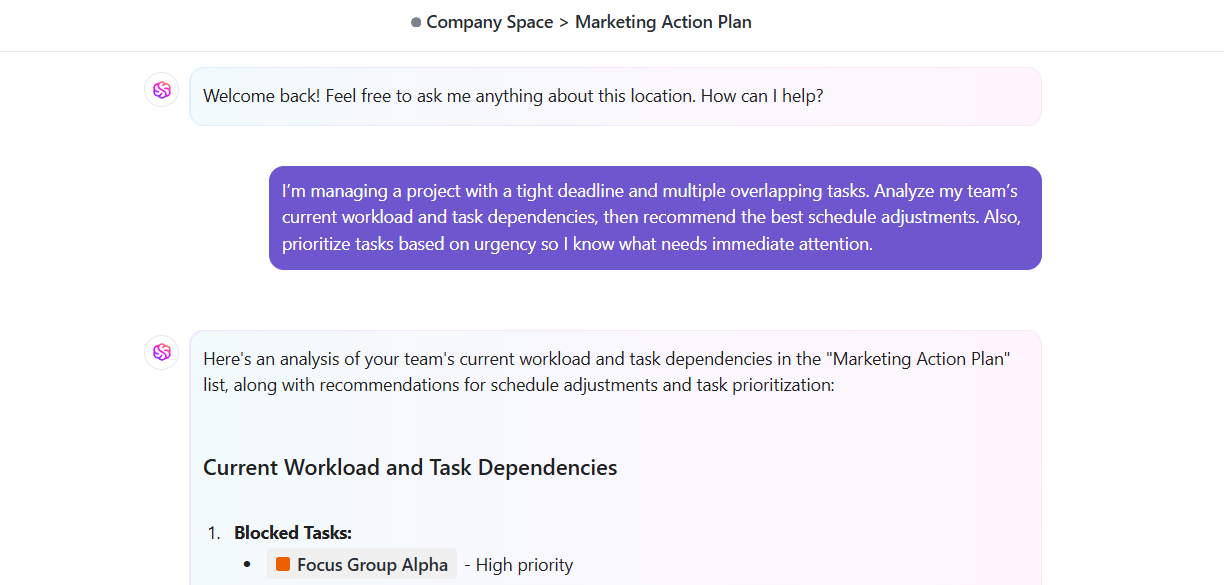
📌 Example: A new hire wants to know the correct formatting for submitting their final report. Instead of emailing the team lead or manager, they ask ClickUp Brain and receive an immediate, accurate response based on company guidelines.

Most of our meetings are scattered across multiple tools—calls on Zoom, notes in Google Docs or Notion, and task tracking in platforms like ClickUp or Asana. This constant switching creates friction, missed details, and extra work just to stay aligned. ClickUp changes that by bringing meetings directly into your workflow. With its built-in audio and video calls, there’s no need to toggle between platforms.
There’s also the ClickUp AI Notetaker to capture and summarize key discussion points in real time. Once the meeting ends, ClickUp Brain can help turn those notes into actionable tasks with just a prompt, making it easy to move from conversation to execution. Everything stays in one place, directly connected to your projects and timelines.
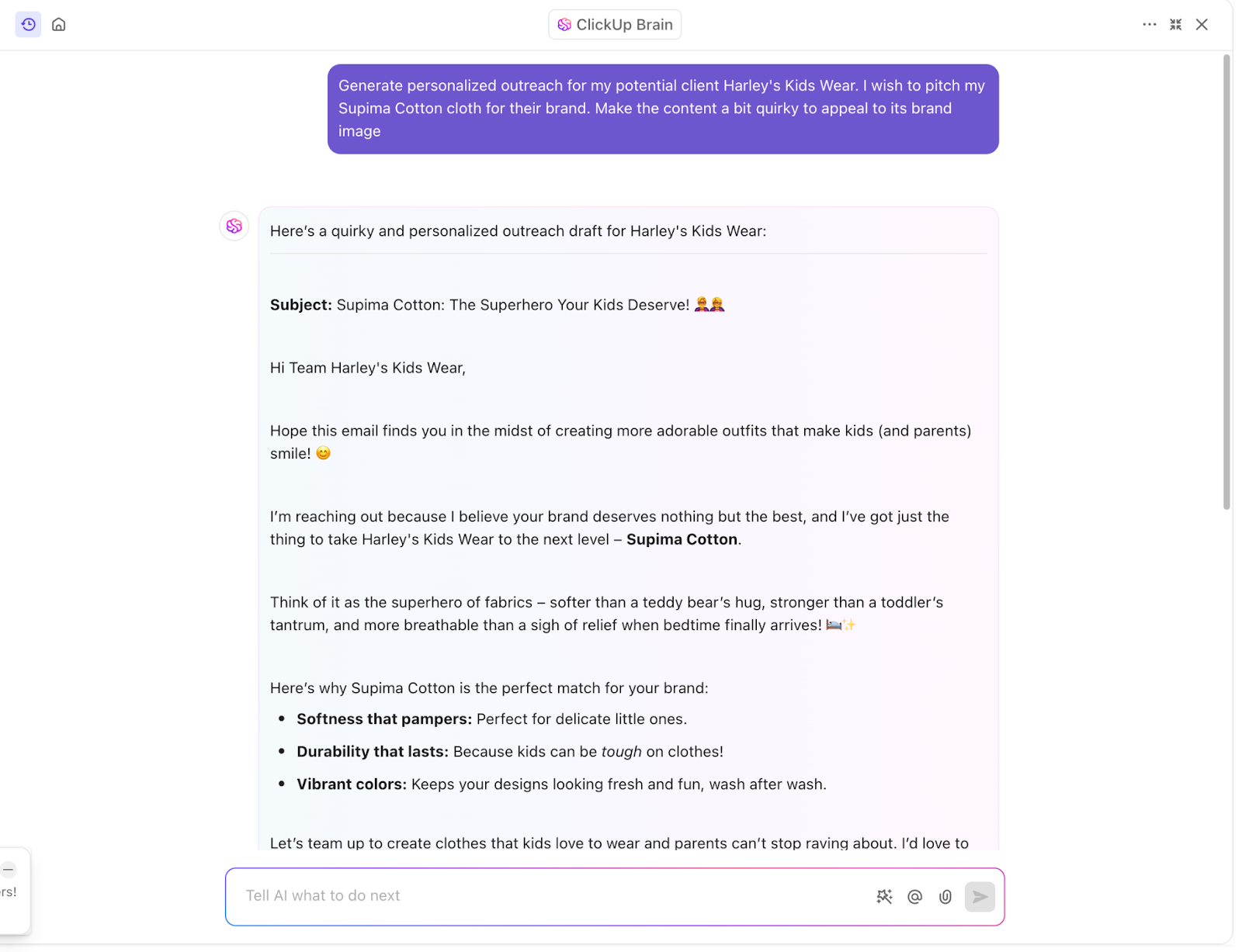
Instead of jumping between writing assistants, grammar checkers, and AI prompt tools, having everything in one place saves time and keeps your workflow smooth. With tools like ClickUp Brain’s AI Writer, teams can write targeted messages, subject lines, company updates, or policy changes using simple, natural language instructions—no need to master complex prompts or track down context first.
And because it’s built into your workspace, there’s no need to install yet another extension just to check spelling or polish your writing. Integrated AI makes it easier for everyone on the team to write with clarity and confidence, right where the work is happening.
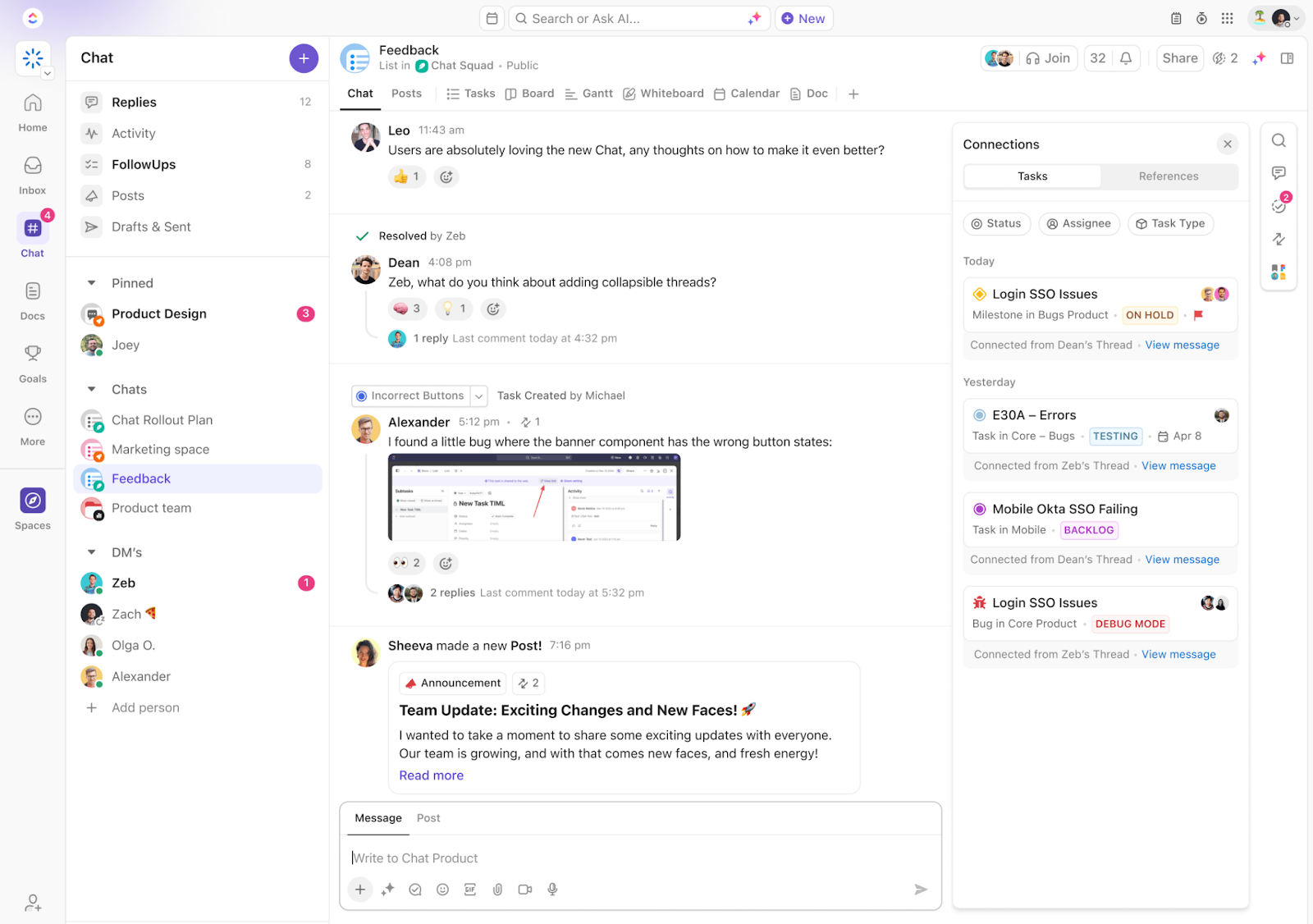
Are your internal announcements and conversations scattered across apps, platforms, and a hundred chatrooms? This can make finding relevant information harder.
Instead of juggling multiple apps, employees can communicate, collaborate, and manage work in one place, ClickUp Chat, ensuring that conversations lead to action.
ClickUp Brain’s AI Autopilot Agents work with ClickUp Chat to improve communication without losing context. For example, ClickUp Brain scans long chat threads and generates concise summaries, helping employees quickly catch up on key points.
It can also suggest responses and refine messages, ensuring clarity and professionalism. Best part? You can convert chat discussions into tasks, assign owners, and link related documents, reducing manual follow-ups.
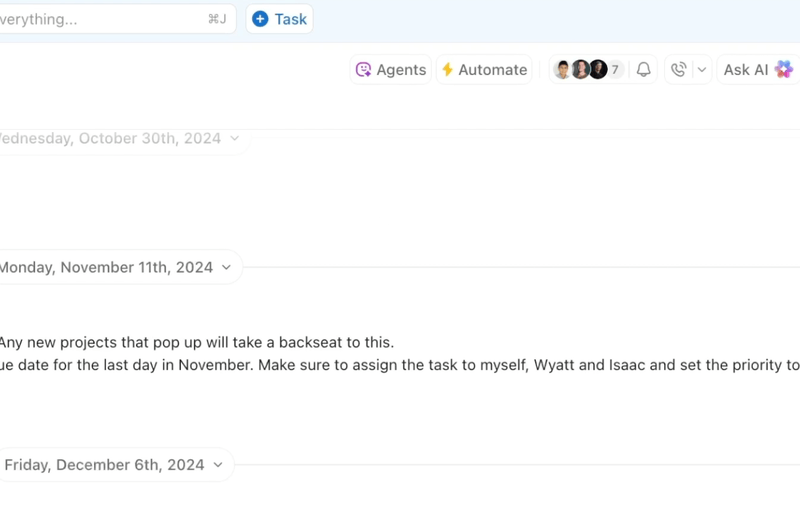
ClickUp Chat also makes everyday tasks a little less complex via:
💡 Pro Tip: Use ClickUp Connected Search to quickly find any document, task, or conversation across all your connected work apps. Simply type what you need, and ClickUp Brain will retrieve the most relevant results, even summarizing key insights.

Async video messages are a great way to communicate updates, share announcements, or provide feedback, especially when working with teams spread across different time zones. They allow everyone to catch up at their convenience, without missing important context.
With ClickUp Clips, async communication becomes even more powerful. The tool automatically transcribes your video clips, making them searchable by keywords or specific moments, so teammates can quickly find the parts that matter most.
Clips are also auto-organized in a central hub, and AI helps with naming and categorizing them for easy retrieval. Whether you’re reporting a bug or sharing an update, you can simply record a quick video, and AI will even generate a task from it.
It’s a smart way to keep everything organized and ensure your messages are easy to reference without the need for extra meetings or long follow-ups.
💟 Bonus: Supercharge your internal communications workflows by integrating multiple LLMs (like ChatGPT, Claude, or Gemini) directly into your workspace. Combine this with built-in web search tools to brainstorm, research, and generate content—all without ever leaving ClickUp. Whether you’re drafting emails, analyzing data, or outlining projects, toggle between models and search results in real-time to get the best insights from each tool. ✨
Samantha Dengate, Sr. Project Manager at Diggs, structured their communication with ClickUp:
Before ClickUp, meetings, and back-and-forth email communications led to a black hole where items were left unseen and unattended. Due to this, tasks were not being reviewed on time, and no one knew how the creative development was going.Now, everyone on the team can clearly see when action items are due, chat and collaborate within the tasks.
AI internal communication sounds like it will resolve all communication-related issues in the workplace. However, it comes with its fair share of challenges.
Before implementing these processes, pay attention to these roadblocks and adapt solutions:
About 50% of American employees are concerned about inaccuracy, and 40% worry about intellectual property infringement when implementing generative AI in internal communications.
To resolve this issue, organizations must:
According to reports, 70% of employees need a skill upgrade to utilize AI for their work processes. Naturally, this gap fills them with fears of job security, reliability doubts, and discomfort with automation. To ease the transition, companies can:
👀 Did You Know? 78% of employees report that the availability of learning opportunities influences their decision to switch jobs.
One of the biggest causes of communication chaos is scattered communication channels across multiple tools. To have all the information in one place, choose a unified platform with rich integrations.
For example, ClickUp Integrations are compatible with 1,000+ workplace tools.
For a smooth transition:
➡️ Also Read: How to Use AI in Project Management (Use Cases & Tools)
As AI continues to evolve, its role in internal communications will go beyond automation. Expect smarter sentiment analysis, hyper-personalized messaging, and predictive insights, enabling companies to boost engagement, address concerns, and drive stronger workplace connections like never before. Here’s a peek into AI internal communications’ future:
One of the biggest hurdles identified is the sheer volume of messages employees face. At least 43% of internal communicators highlighted information overload as a top challenge.
Generative AI can help by:
For example, a data analysis AI can scan your inbox and internal chat, then create a concise morning briefing highlighting urgent messages, upcoming meetings, and critical updates tailored to your role.
📮 ClickUp Insight: 88% of our survey respondents use AI for their tasks, yet over 50% shy away from using it at work. The three main barriers are a lack of seamless integration, knowledge gaps, and security concerns.
But what if AI is built into your workspace and is already secure? ClickUp Brain, ClickUp’s built-in AI assistant, makes this a reality. It understands prompts in plain language, solving all three AI adoption concerns while connecting your chat, tasks, docs, and knowledge across the workspace. Find answers and insights with a single click!
According to the report, many organizations are turning to mediums other than email and meeting scheduling. Short-form videos, interactive podcasts, and even immersive AR/VR experiences are emerging as effective alternatives.
This shift can cater to diverse communication preferences and lessen information overload, ultimately boosting employee engagement.
23% of people describe AI’s current role in internal communications as ‘net neutral’, while 48% admit that AI tools have made them more productive. Regardless, you can expect AI to:
👀 Did You Know? 58% of employees report increased work satisfaction and improved relationships with colleagues as a result of effective communication in the workplace.
Scattered communication can leave employees feeling lost and disconnected. That’s why having a clear structure is key—it keeps teams aligned, reduces information overload, and boosts productivity.
A unified platform like ClickUp can change how communications are run. Turn a quick chat into a task, auto-transcribe screen recordings, or summarize key updates with AI—all in one place.
Ready to simplify internal communications? Sign up for ClickUp for free today!
© 2025 ClickUp